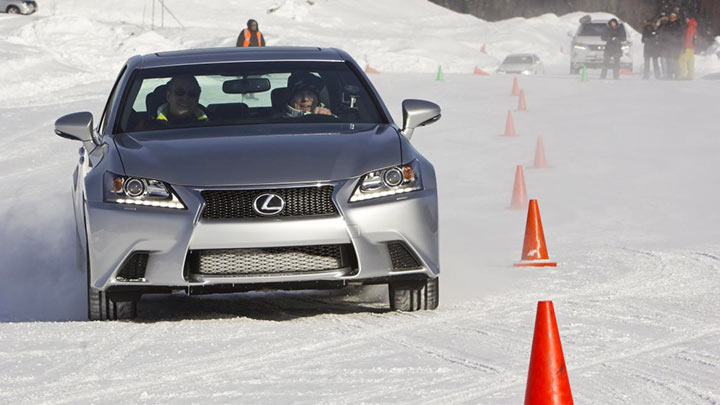Canadians are procrastinators when preparing their cars for winter.

As Managing Director for the Canadian Automobile Association, Ian Jack, knows a thing or two about the topic. “We’d all maybe like to pretend that we don’t have winter in this country, but we do.”
A TD Insurance winter driving poll confirms Jack’s sentiment. Two-thirds of Canadians surveyed do not have an emergency kit in their trunk and four in ten do not get their car serviced before the start of winter.
The number one call that Jack receives in the winter from the six million members of CAA across the country? Dead batteries.
“Our clubs, they call it a ‘code red day’ when the temperature in the morning is below minus twenty degrees Celsius,” Said Jack.
With Global News meteorologist Anthony Farnell predicting cooler temperatures this winter in parts of the country, you don’t want to be stuck on the roadside with a dead car.
These tips will get you ready for a safe winter on the road.
Preparing your car for winter
Safe winter driving begins before you get into your car and start your engine.
Take an afternoon to get your car ready for winter by:
- Checking the battery in your engine: According to CAA, a fully-charged battery loses 35 per cent of its power at zero degrees Celsius and, a battery that is four or more years old is considered near the end of its life. You can check your battery’s life by taking it in to a trusted mechanic for testing. You can also maintain the life of your battery by keeping it clean and dry.
- Checking your brakes: All braking components should be inspected yearly or every 20,000 kilometres. If your car isn’t braking smoothly, take it to be serviced.
- Checking all the lights to see if they’re working and replacing any burnt out bulbs.
- Putting on winter tires to provide better traction on icy roads: The manual will list the correct winter tires for your car. You can put them on yourself or have your mechanic switch them.
- Checking windshield wipers and replacing them if they are damaged: Damaged wipers can leave streaks on the windshield and reduce visibility while on the road.
- Replacing any items you may have used in your emergency kit.
Invest in technology
Technology in cars has become an assistant to drivers while on the road. These include; 24-hour access to live navigation assistance and real-time traffic and weather information. Many of these services are available through voice-controlled applications.
Other safety features help in icy conditions. Some cars, like the Lexus GS series, have the technology to help automatically reduce engine power when the pedal is firmly applied, even if the accelerator pedal is fully depressed.
Practice safe driving techniques
The TD Insurance winter driving poll found that a quarter of Canadians feel scared, anxious and uneasy when driving in winter conditions. If you are a nervous driver, here are some tips on what to do in winter-related situations.
Keep a safe distance
Keep a safe distance between your car and the car ahead of you because takes longer to stop on a slippery road. The British Columbia Ministry of Transportation suggests a distance of four seconds or two car lengths.
How to handle a skid
If you lose control of your car due to a skid, experts recommend steering in the direction of the skid. To avoid skidding, drive at a reduced speed and brake slowly and evenly.
How to handle black ice
Black ice is a cause of many car accidents. While you cannot avoid black ice, you can identify where to find it. Common locations include under bridges, overpasses and other shaded areas. If you suspect black ice, the Ontario Ministry of Transportation recommends the following: “Slow down, keep your foot off the brake and be ready to shift to neutral or step on the clutch as your vehicle crosses these areas.”
Know when to stay home
When the weather is extremely poor, the safest action is to stay home. Pay attention to the weather forecast, especially to storm warnings and whiteout conditions. If you absolutely have to drive under those conditions, practice safe driving techniques.
See how the new Lexus GS 350 AWD and F SPORT did when tested in the slippery winter conditions at Mecaglaisse Motorsport near Montreal.

